Introducing a riverfront corridor that is ecologically valuable, culturally memorable, and economically viable
Pingshan River Blueway
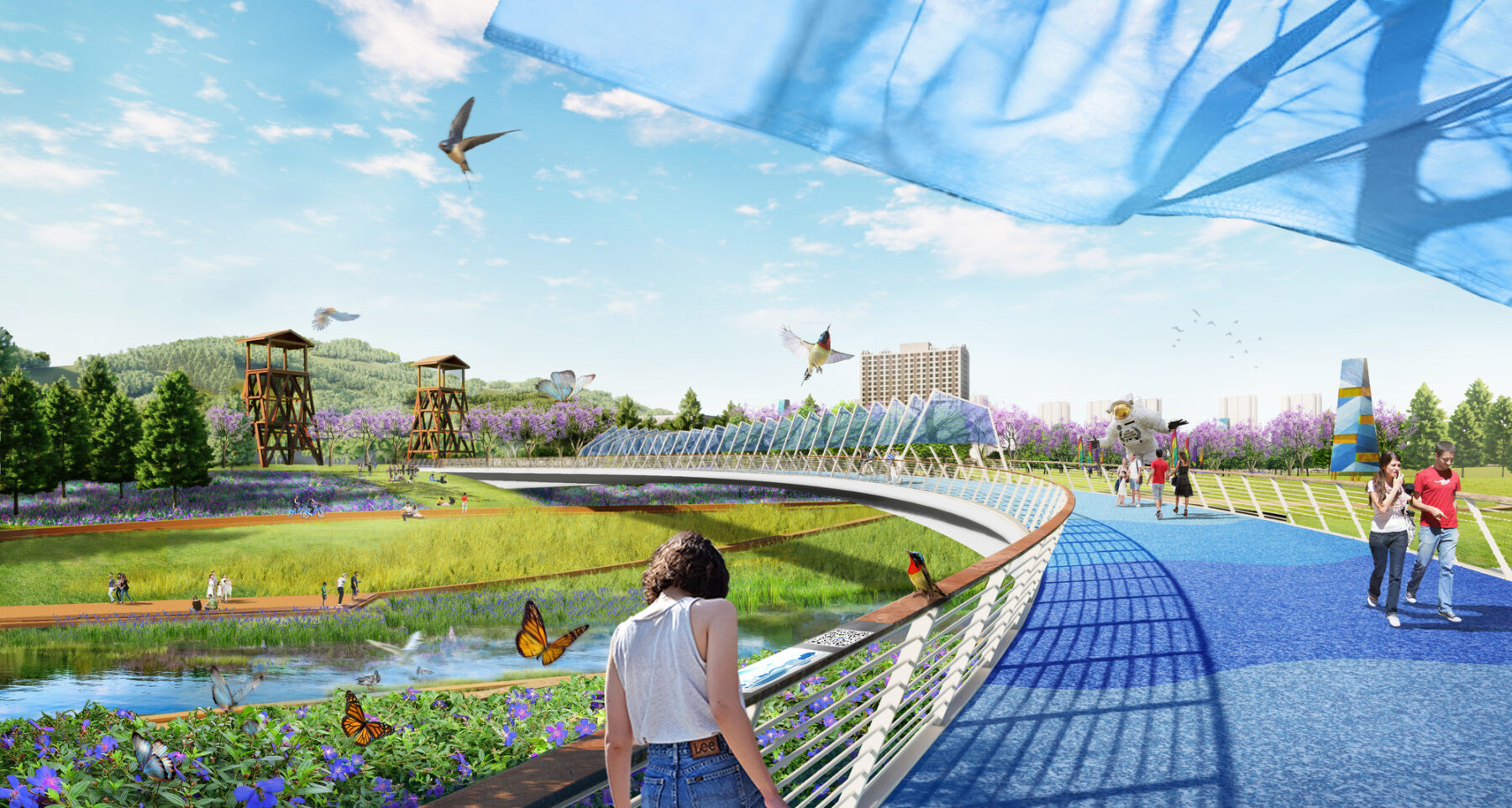
Inspired by its beautiful natural landscape, rich Hakka heritage, and comfortable waterfront lifestyle, the Pingshan River Blueway Master Plan proposes a resilient and vibrant riverfront corridor that is ecologically valuable, culturally memorable, and economically viable to the region.
As a close collaboration within a multidisciplinary team and local residents, scholars, and various government agencies, Sasaki’s plan for the riverfront corridor adapts three overarching strategies to holistically improve the Pingshan River landscape: ensure safety and restore the ecosystem to build a resilient waterfront; enhance cultural landscapes to better engage with and educate local communities; and integrate with the city to sustain long-term success.
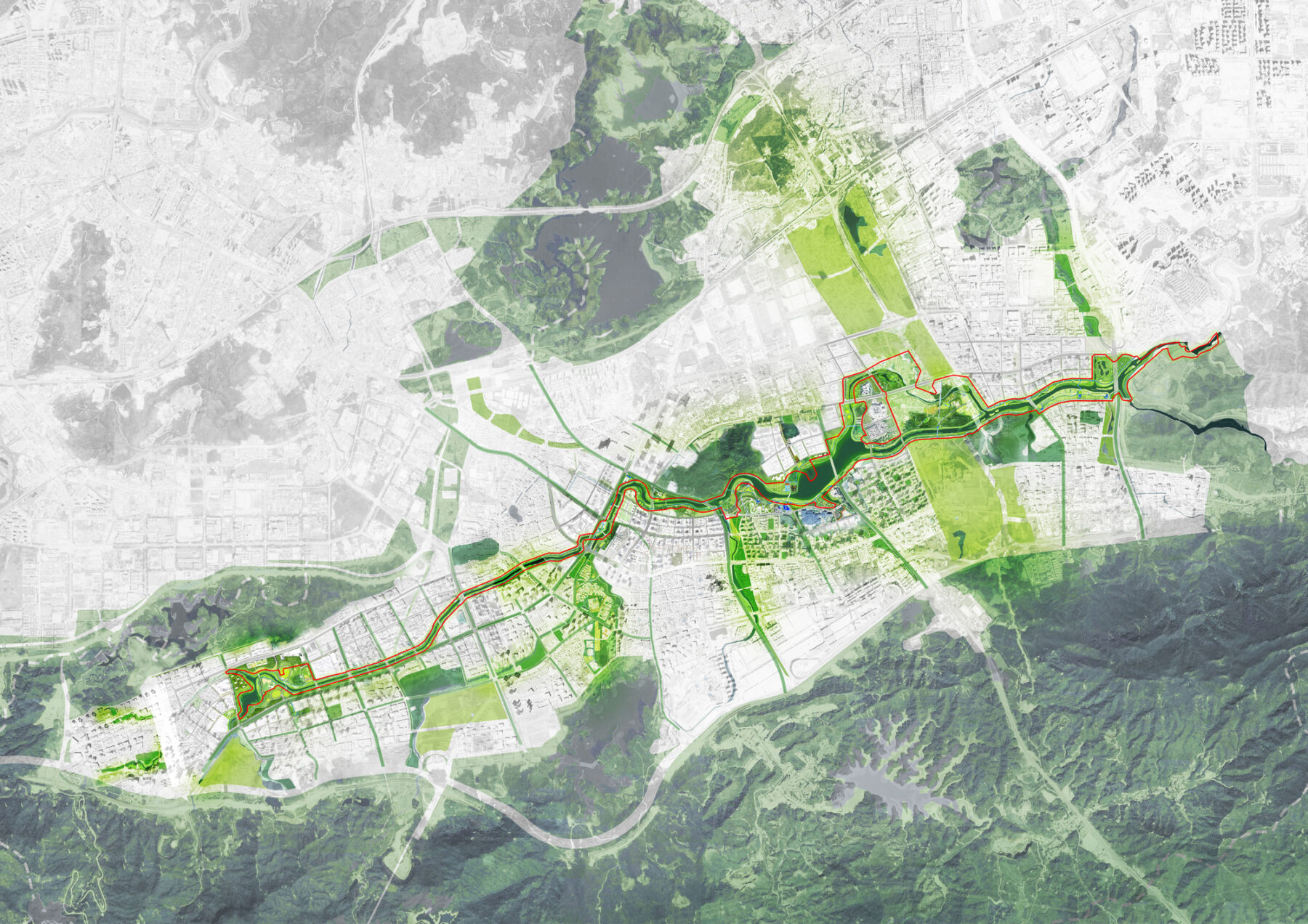
Once dominated by farmland and Hakka villages, Pingshan riverfront will reconnect with its natural and cultural assets
Challenges and Opportunities
The engineering of the Pingshan River channel in the 1960s resulted in low flood resiliency and significant loss of habitats. Since the early 1980s, accelerated economic development exacerbated the river’s environmental degradation, as industrial wastewater was discharged into the river, and unplanned development and oversized water conservancy projects encroached riverbanks. As a result, the river was separated from the community, causing the Hakka people to shift their traditional riverfront living into apartment buildings in the surrounding city.
Since 2019, a multi-disciplinary team of designers, hydrologists, ecologists, and engineers have been working on the Blueway master plan which spans the 9.56-mile long mainstream of the Pingshan River. The plan presents an opportunity to create continuous public riverfront access, celebrate local culture, minimize flood risks, and guide the adjustment and transformation of surrounding urban and industrial uses.
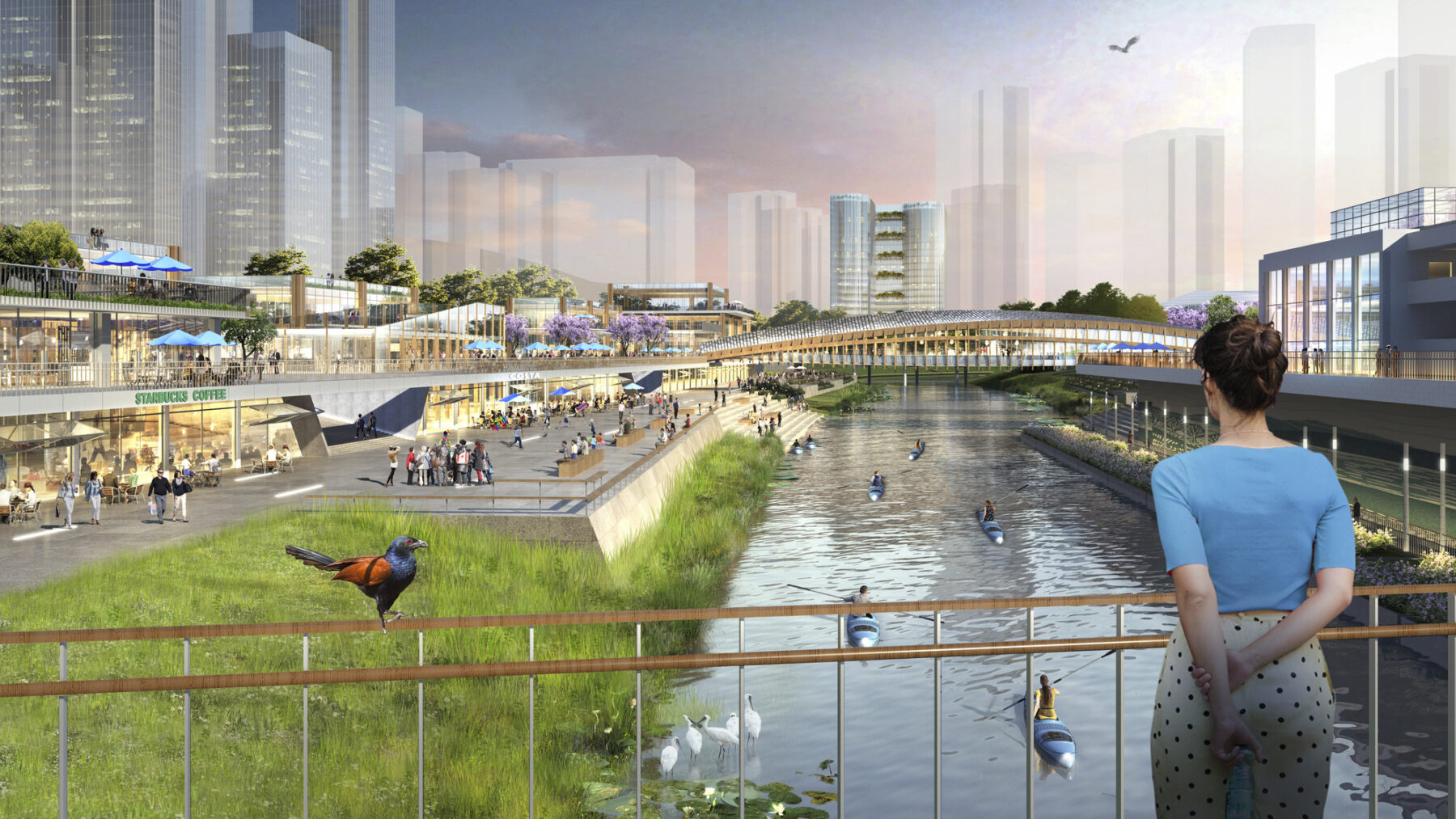
A variety of tour routes linking the natural and cultural assets of Pingshan weaves the Blueway into the city-wide public realm network
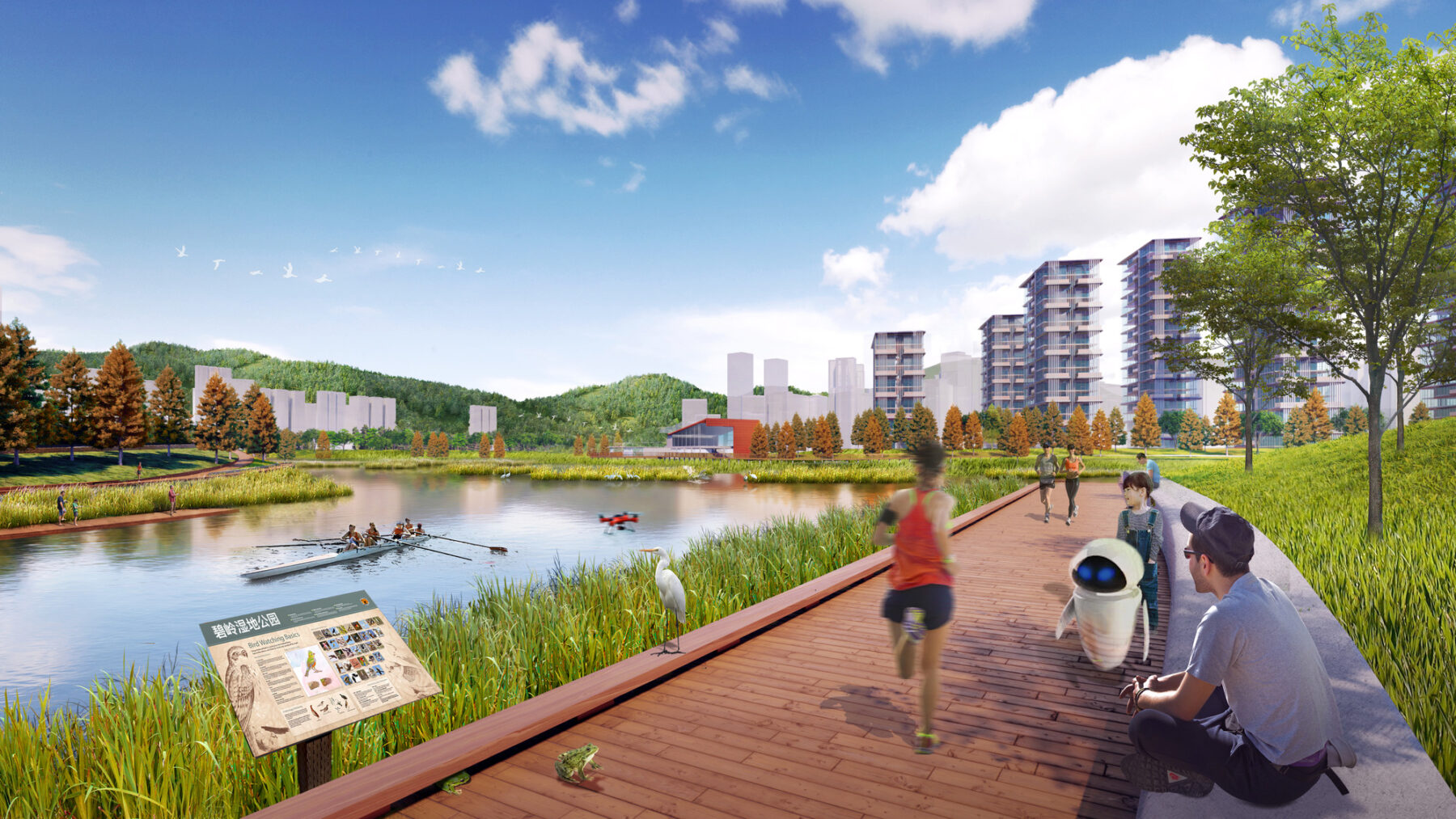
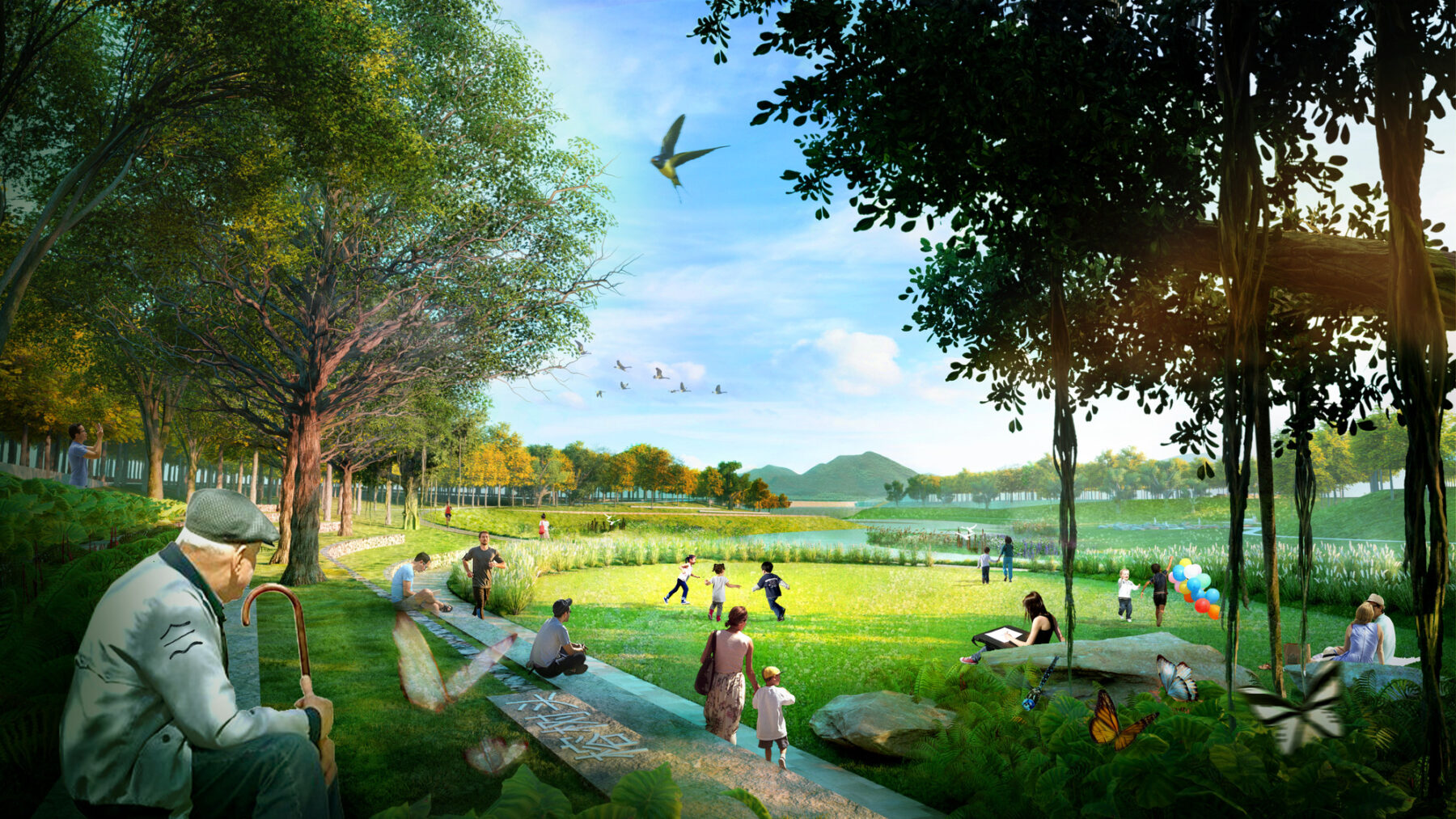
The old ficus upon the river serves as the precious natural resource, telling the stories under the trees and painting the image of Pingshan
Three Overarching Strategies
Following site visits and interviews with all stakeholders, the design team proposed three design strategies to create a vibrant riverfront corridor.
1. Ensure Safety and Restore Ecosystem to Build Resilient Waterfronts
Besides transforming existing hard edges to soft landscapes and providing extra room to sustain flooding, the plan also establishes a comprehensive water management approach to mitigate the impact of climate change and restore the river ecosystem.
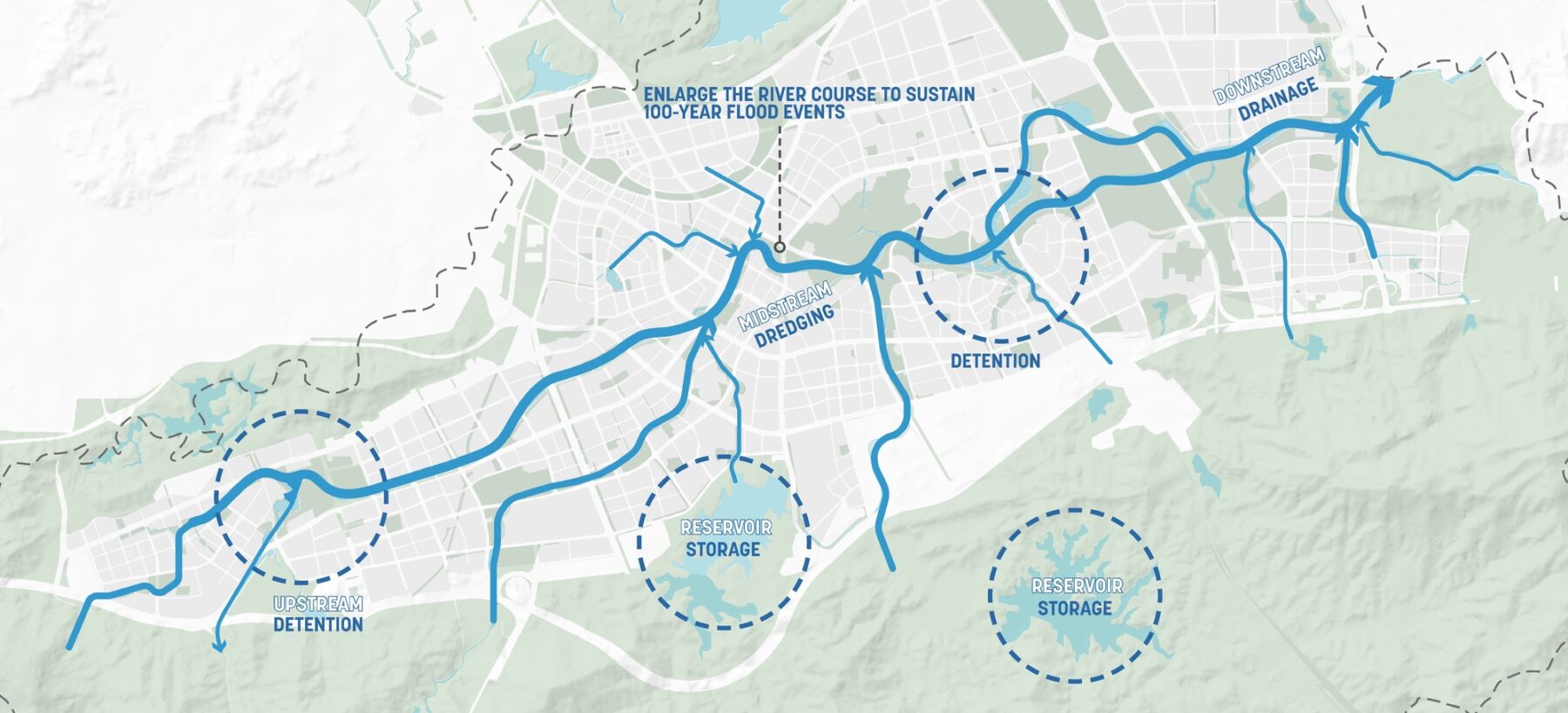
A three-dimensional prevention and control system will ensure that the mainstream meets the once-in-a-hundred-year flood control requirements
The plan suggests adapting the river’s natural form, retaining a low water trough, locally constructing deep pools and shallow shoals to enrich the riverbed profile and improve the river’s hydrophilic nature, and integrating fish channels with existing backwater facilities to assist with fish migration. The low water trough system will help increase biomass in the river and create more opportunities for people to access the water. Two new lakes will be introduced to ensure the river’s environmental flow, extend the length of the water course and improve the river’s water surface ratio, with five existing reservoirs as supplemental water sources.
The ecological network will be restored with native plant communities and through leveraging natural succession. With a comprehensive blue-green system, including mountain corridors, foothill corridors, riverbank corridors, and green parks connecting the corridors in the north-south direction, the network creates a variety of habitats.
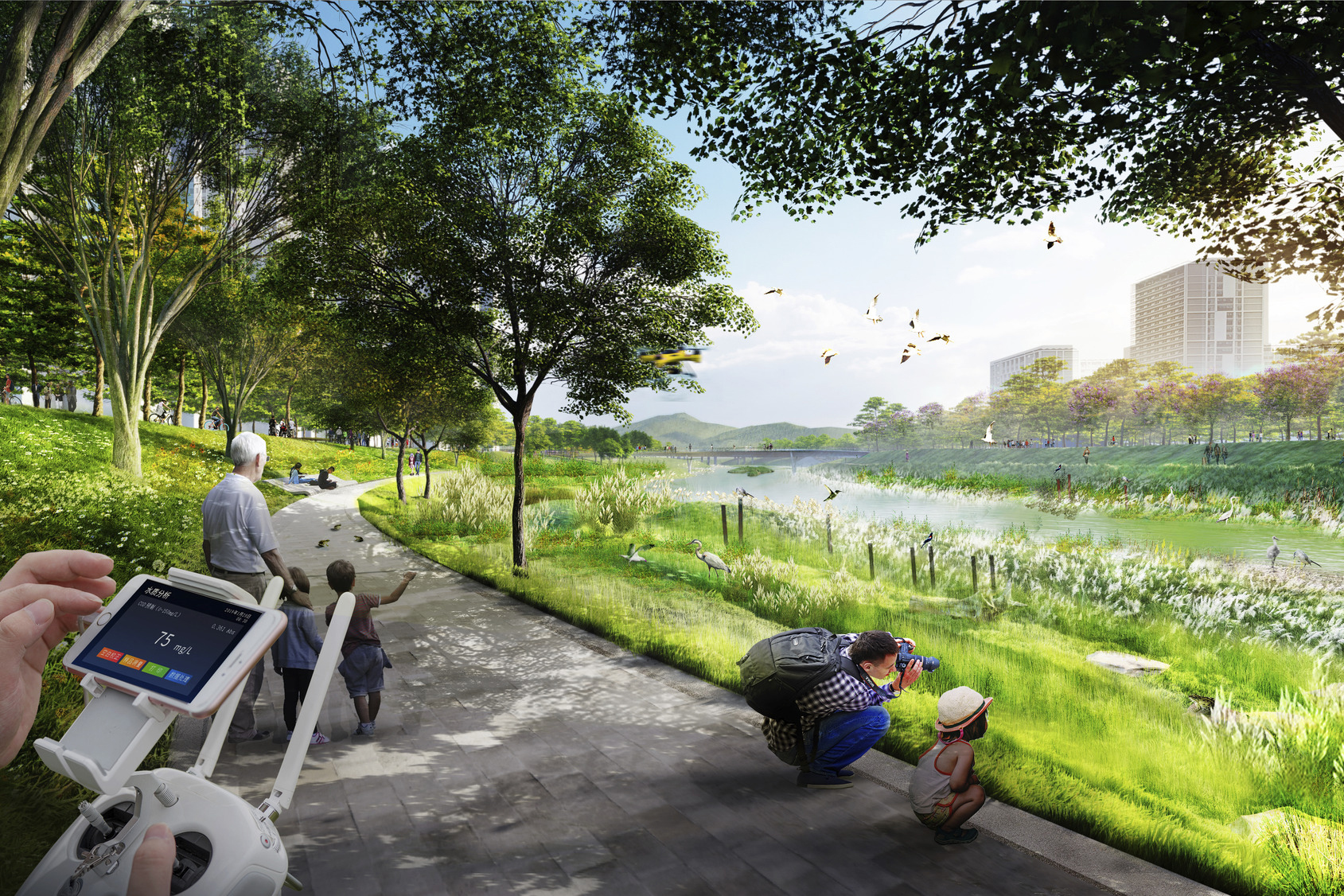
The plan proposes to restore terrestrial, riparian, and aquatic habitats and establish ecological networks across the region. 265 acres of reforestation are proposed to sequestrate 55,280 tons of carbon emission per year
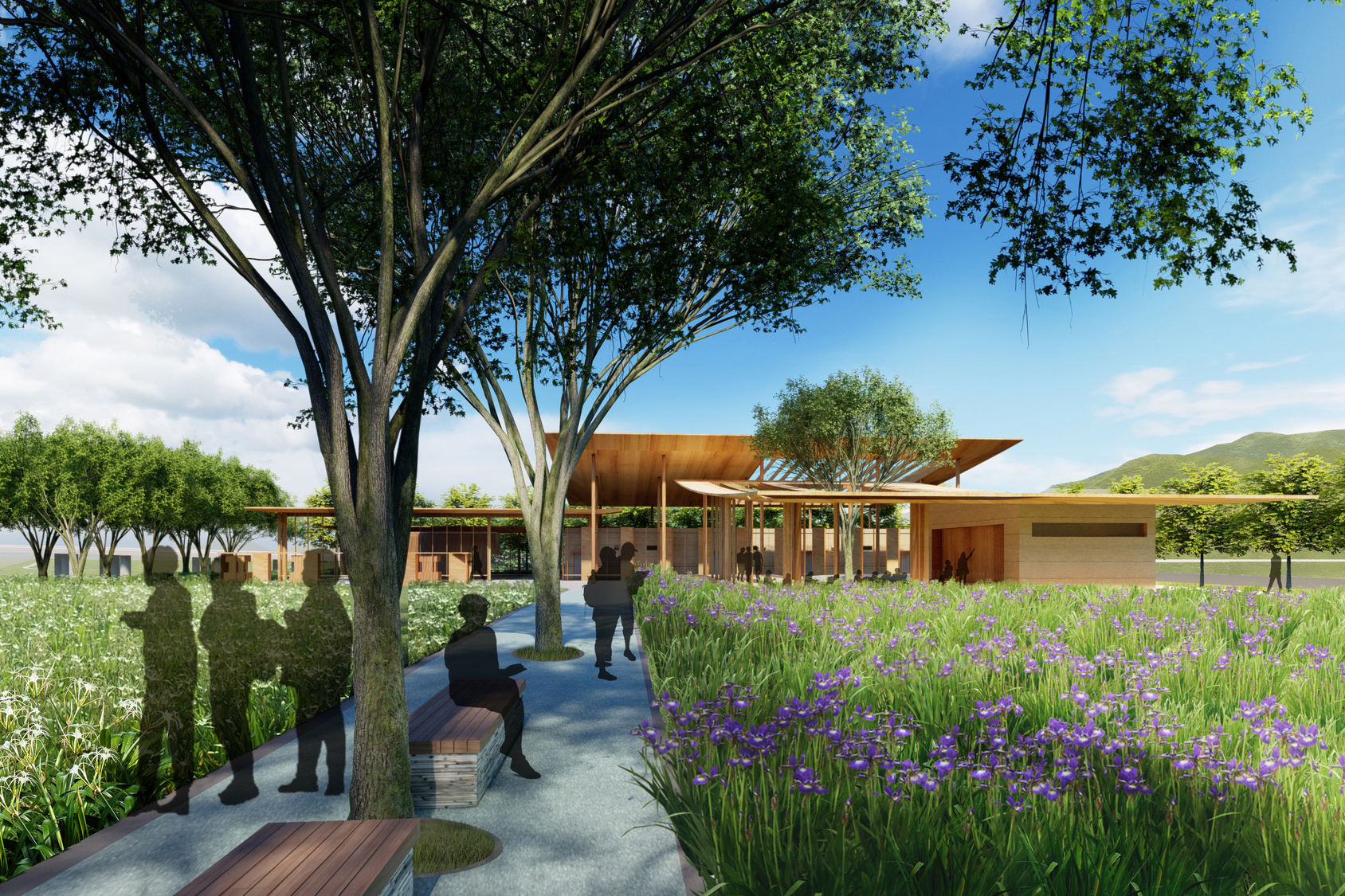
The plan maximizes reuse of existing materials and structures as well as the use of local, recycled, and fast-growing materials to reduce the project’s carbon footprint
2. Enhance Cultural Landscape to Celebrate Local Identity
A new cultural symbol of Pingshan, distilled from Hakka heritage, was developed through the planning process. It will be incorporated in the design of all buildings, site structures, bridges, roads, paths, and site furnishings, bringing them into a system framed by Pingshan’s natural landscape and human history while creating a coherent visual effect.
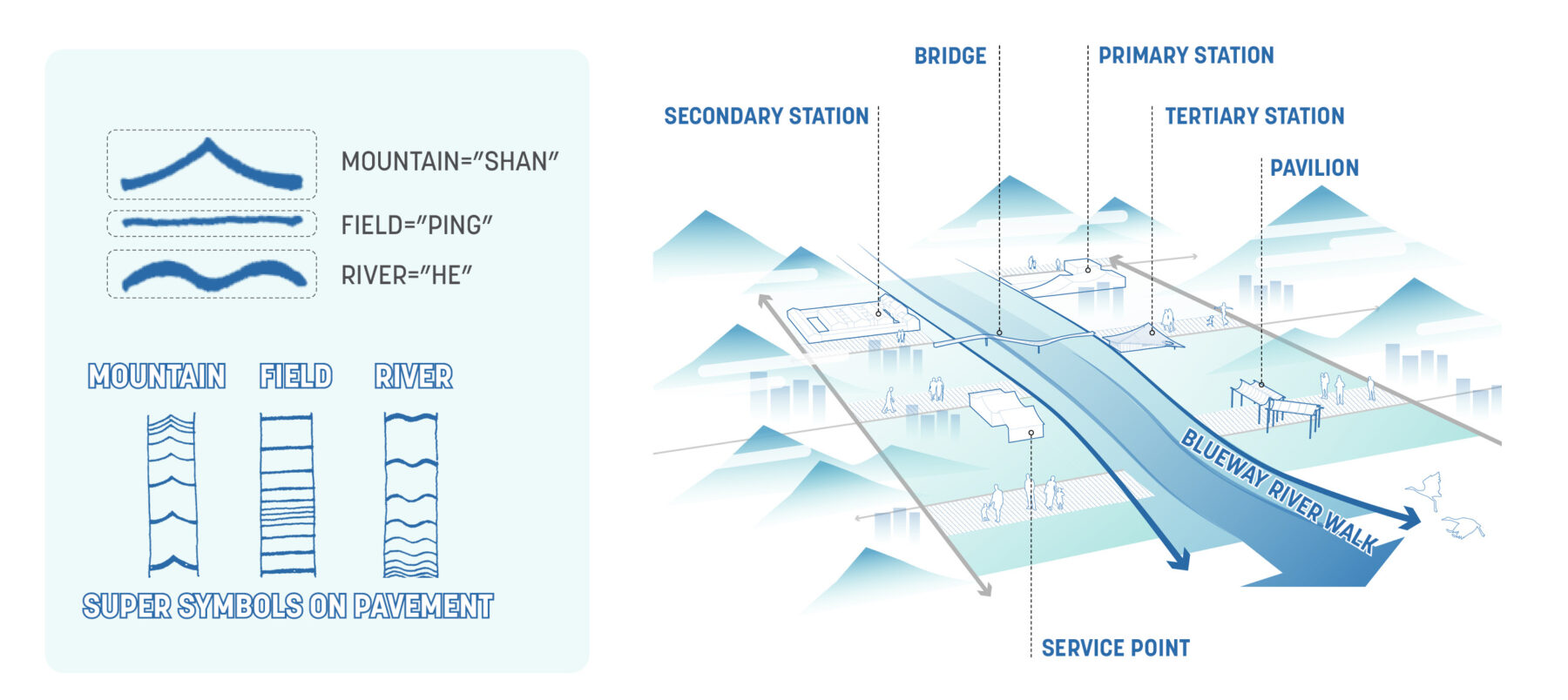
A cultural symbol was designed to convey the natural landscape and human history of the region
Inspired by indigenous Hakka culture, the plan also proposes planting native species associated with Hakka settlements and blue dye along the Blueway and key public space nodes, promoting Hakka culture in the new public realm. The concept of blue dye, resembling the unique blue fabric in Hakka clothing, is also embedded in the designs of pavilions.
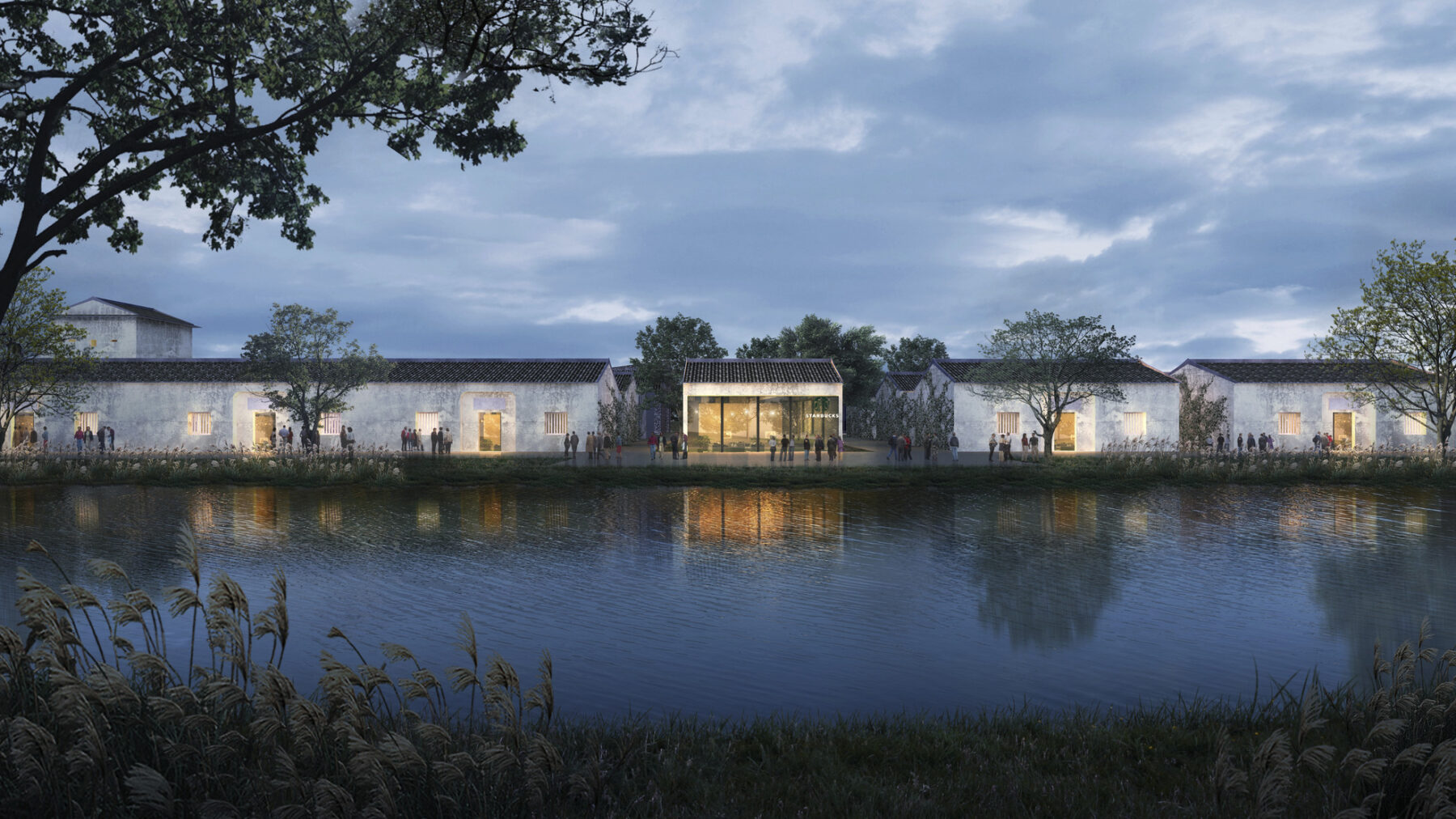
Strategies include renovating historic Hakka structures and introducing new cultural programs
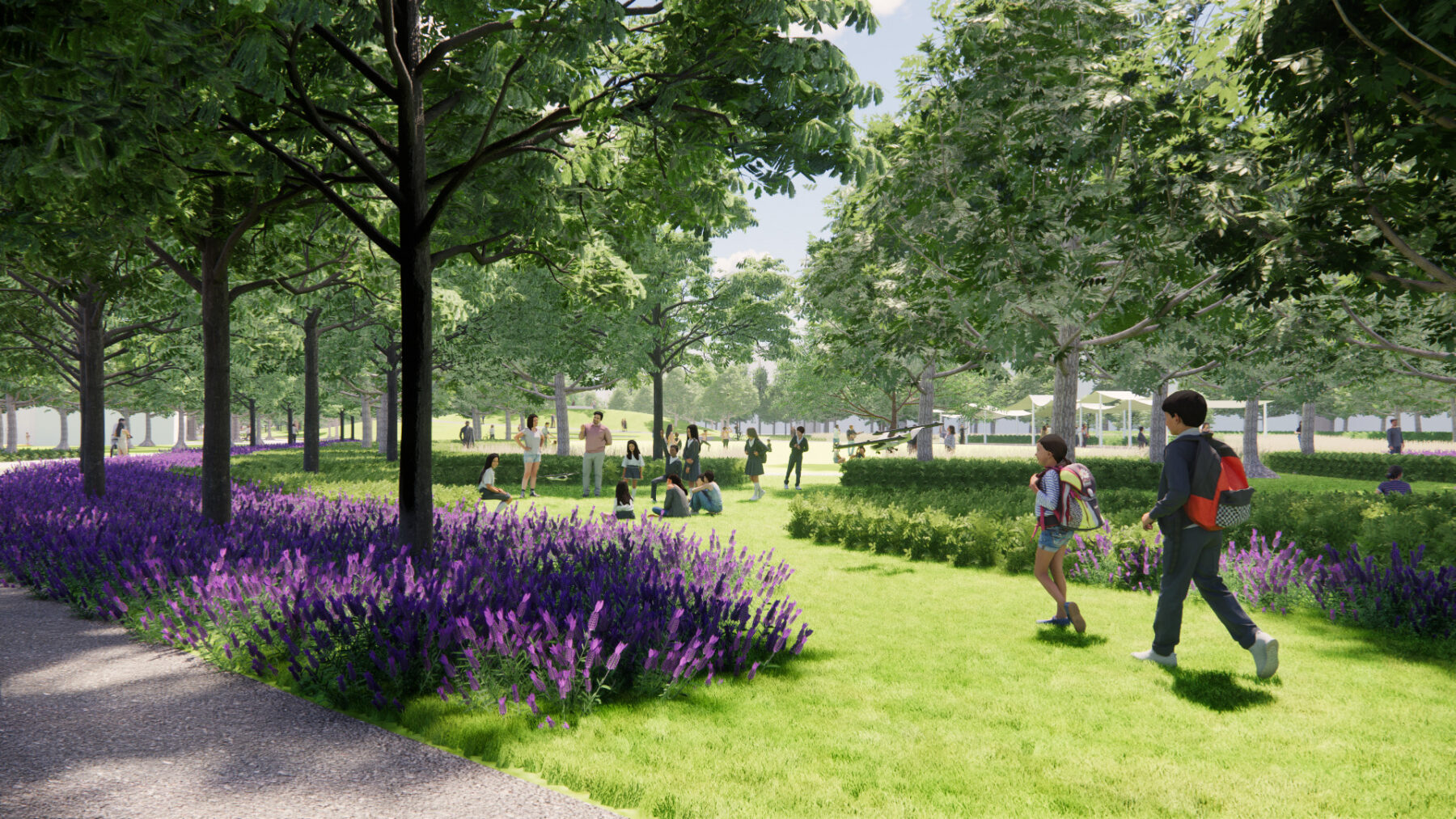
Themed gardens with native plant species for blue dye can be found along the Blueway to celebrate the Hakka craft of blue-dyeing
3. Integrate with the City to Sustain Long-term Success
The plan proposes new public connections along the river, making the Blueway continuous and accessible for everyone. By incorporating new pedestrian bridges, underpasses, and floating paths, the project reconnects existing breaking points along the river. In addition, the project establishes a complete bike path system to seamlessly connect with nearby public transportation, facilitating a low-carbon lifestyle.
The Blueway will continuously interact with the city by establishing a series of 15-minute green-life circles along the river, where green spaces can be accessed at any given point within a 15-minute walking distance. With reference to the district-wide urban regeneration plan, the land around the river can also be integrated to optimize the interfaces between the city and the river, revitalizing riverfront communities and increasing land value.
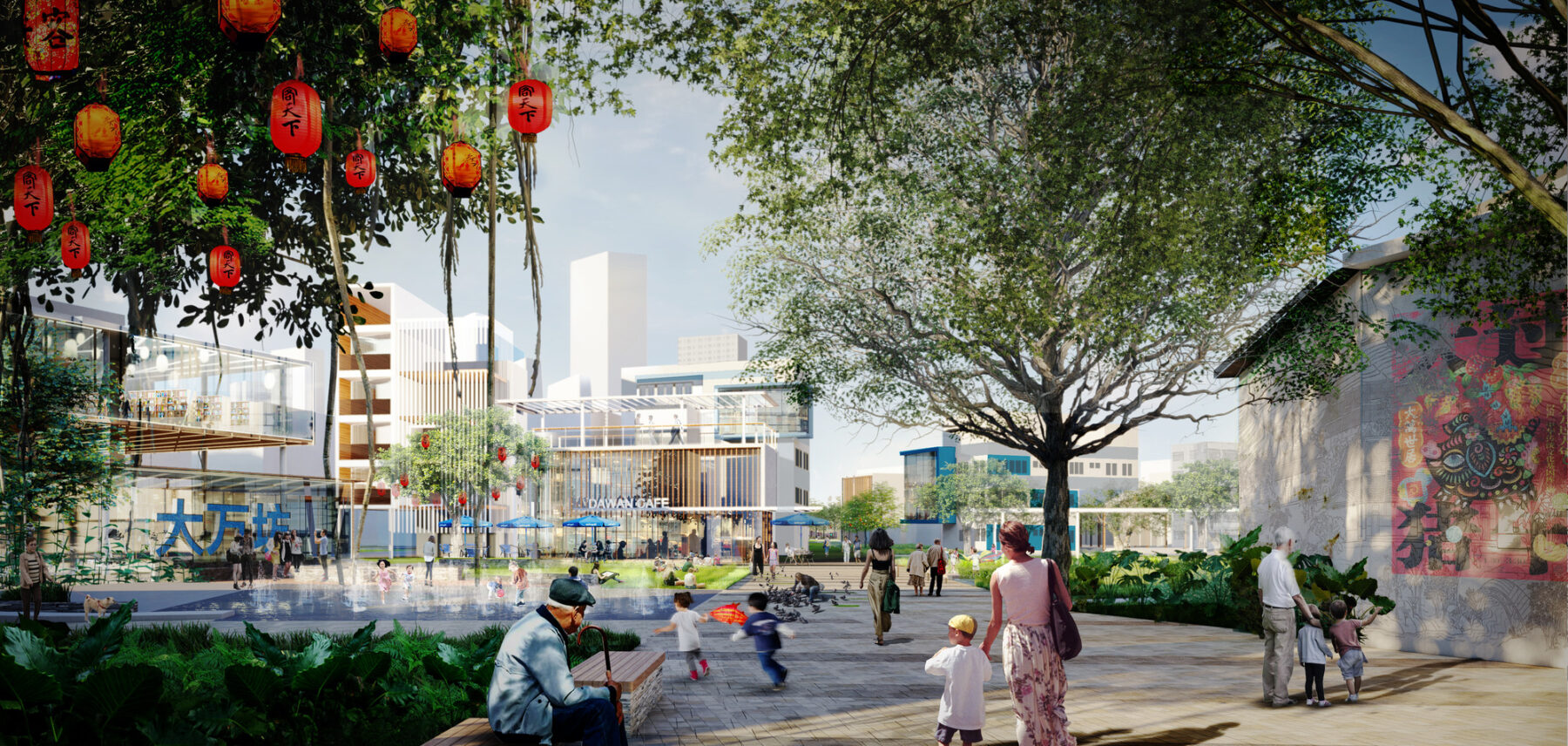
The Blueway optimizes the intersection between the river and the city and offers extensive public access that revitalizes riverfront communities and increases land value
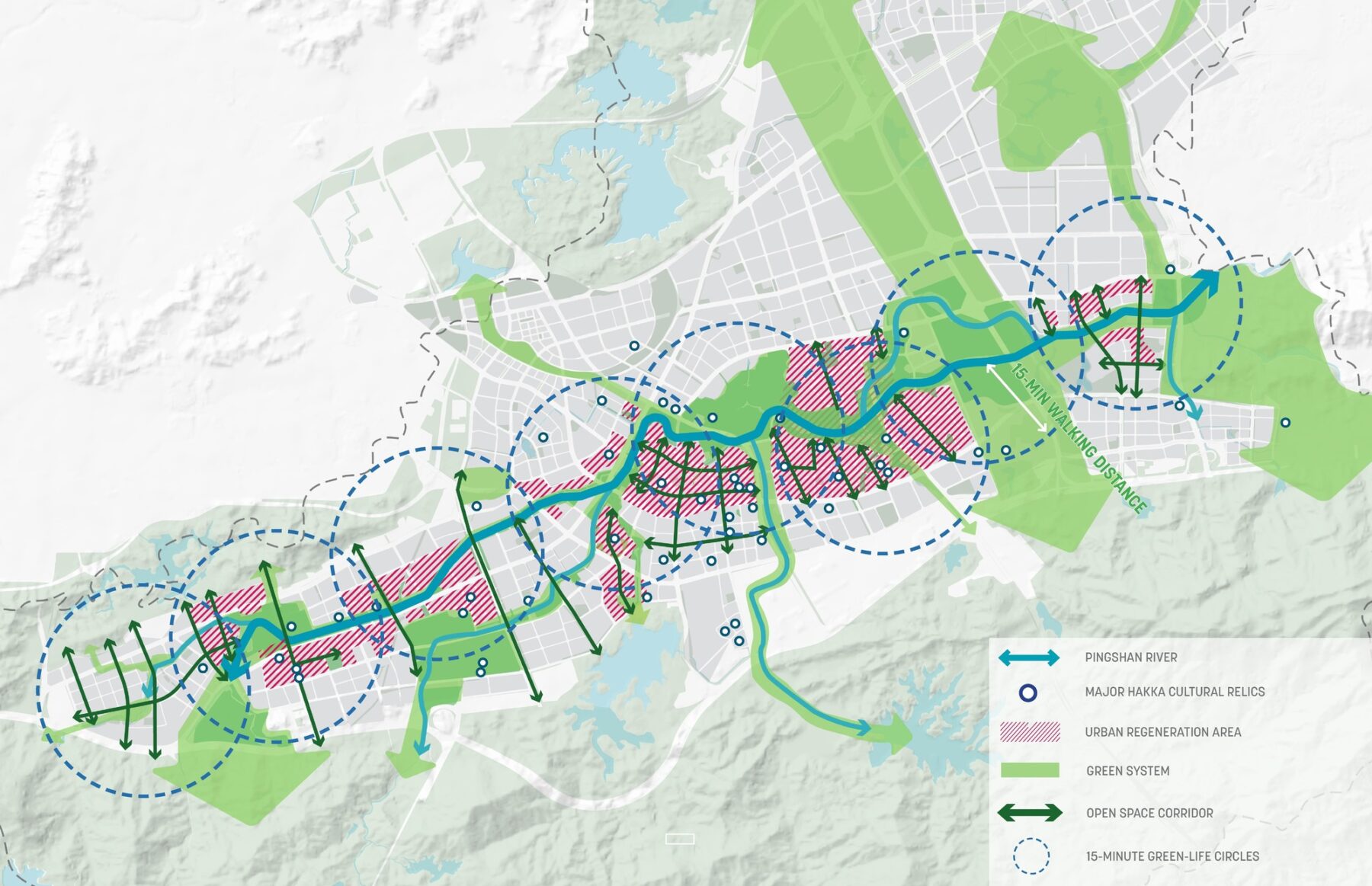
Urban clusters isolated from the riverfront will be re-connected with the Blueway
A four-part gallery experience celebrating Hakka identity
The Pingshan River Blueway will provide a gallery-like experience between the mountains and river, supporting the integration of modern life with Hakka culture and the pioneer spirit of the region. It includes four characteristic segments: the Gateway to Mountains and River, the Journey of Time, the Convergence of City and Lake, and the Joys of Farming and Reading.
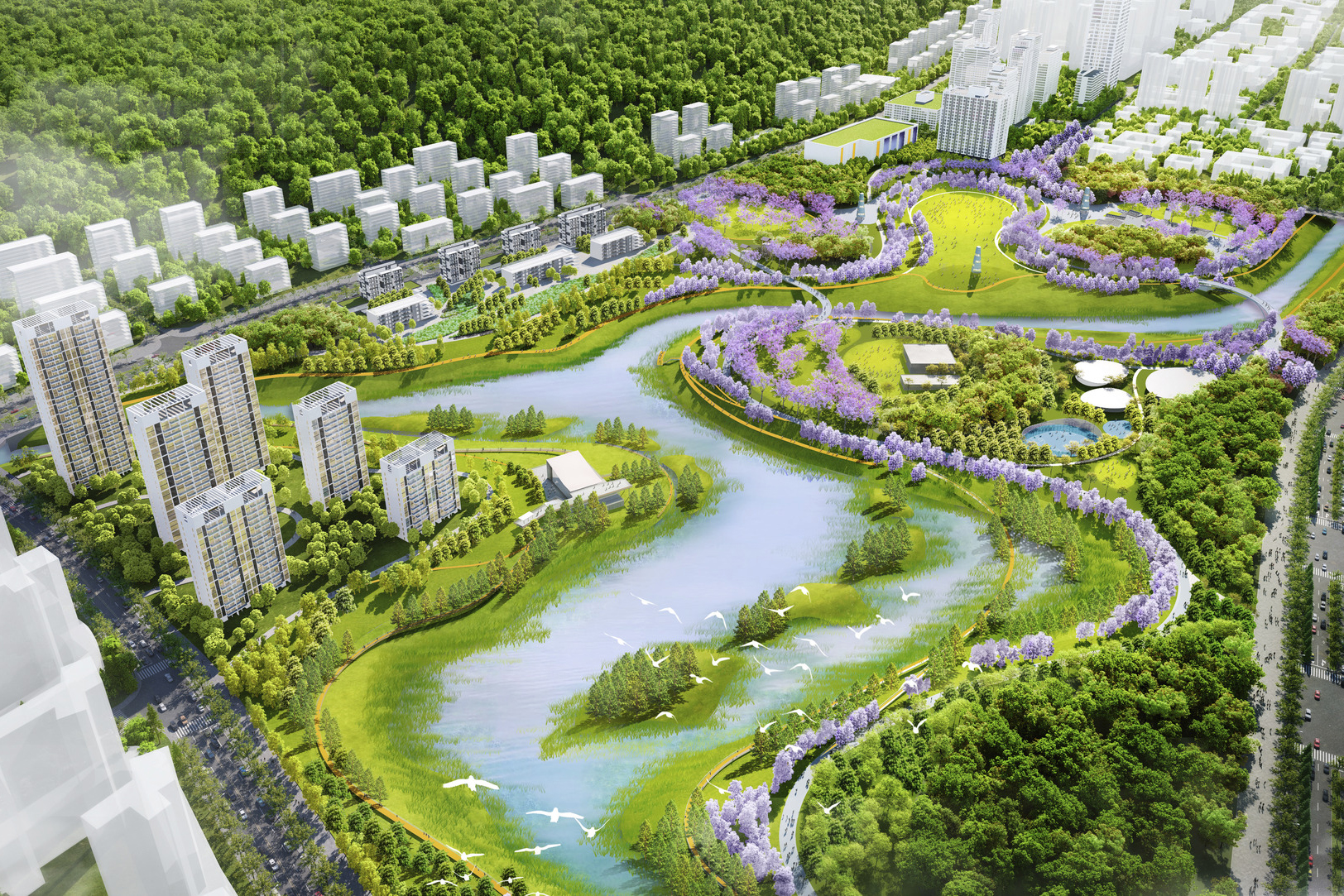
The Gateway to Mountains and River traverses the large Biling Park and the landscape corridor between Maluan Mountain and Qingfeng Hill, building a waterfront lifestyle focused on ecological restoration and Hakka culture
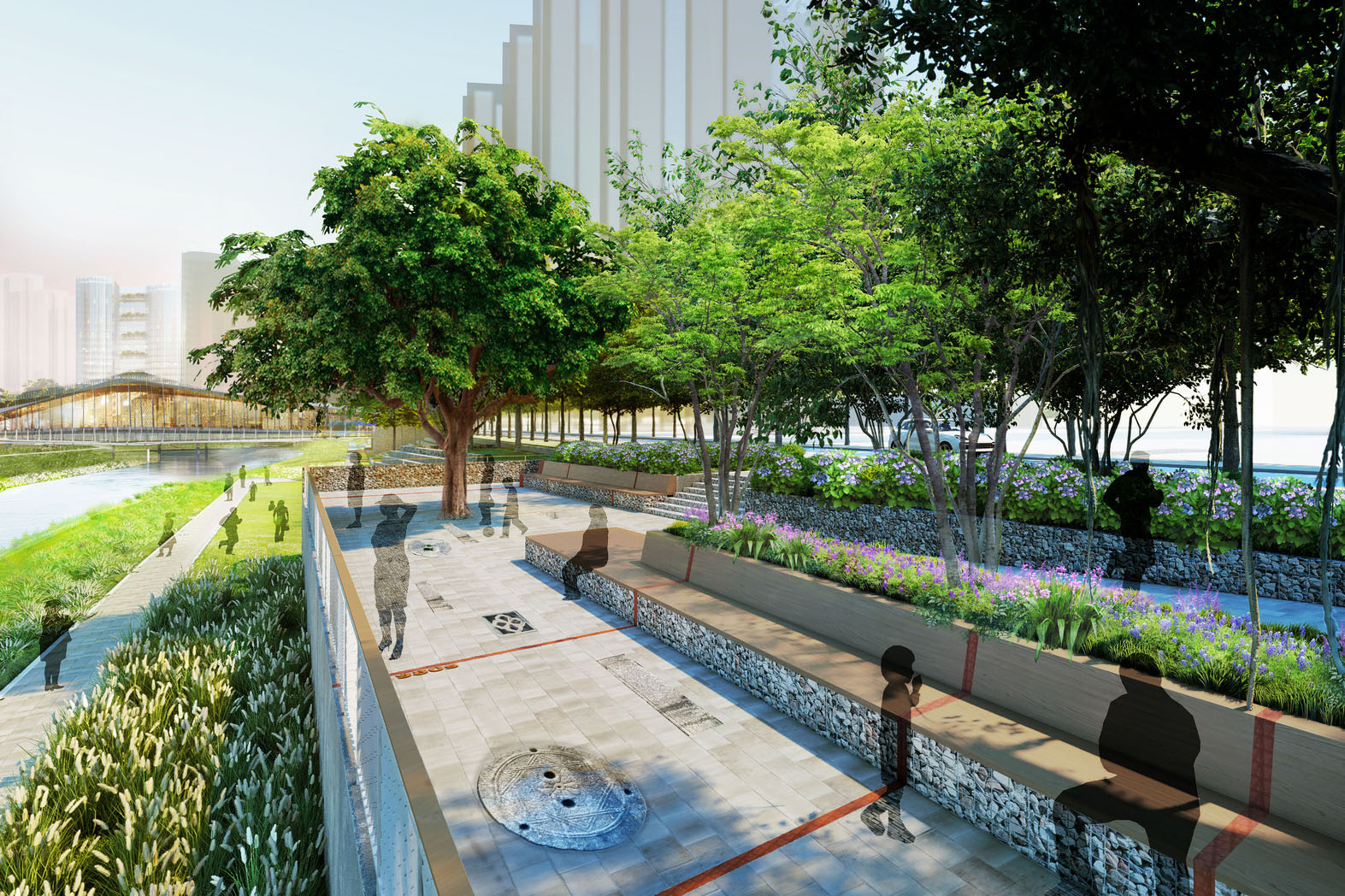
The Journey of Time relies on its central location and adjacent natural and cultural resources to build a riverfront space focused on human experiences and waterfront business
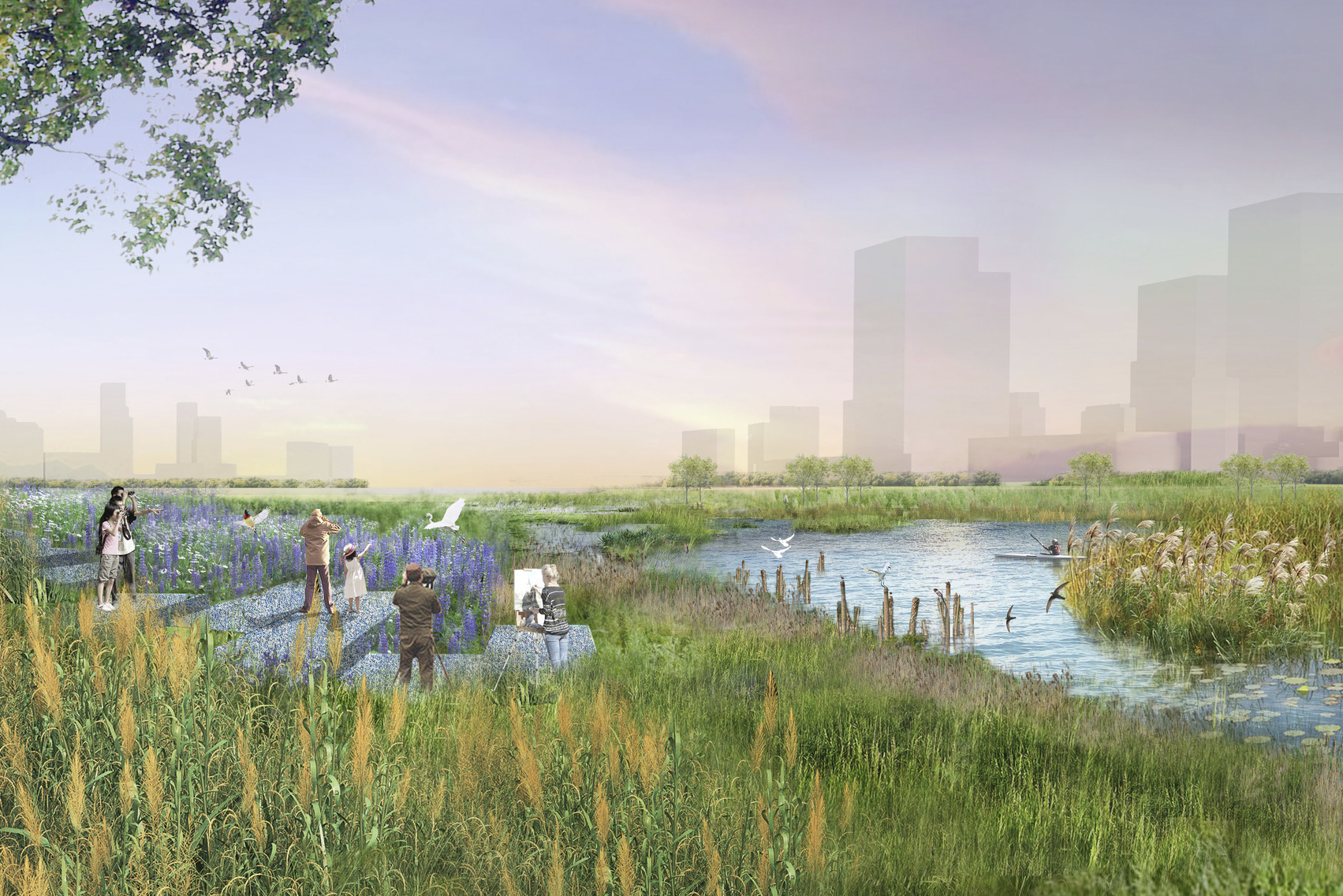
The Convergence of City and Lake, located in the urban development area of Yanzi Lake, creates an urban living room, integrating the Blueway with public recreational uses
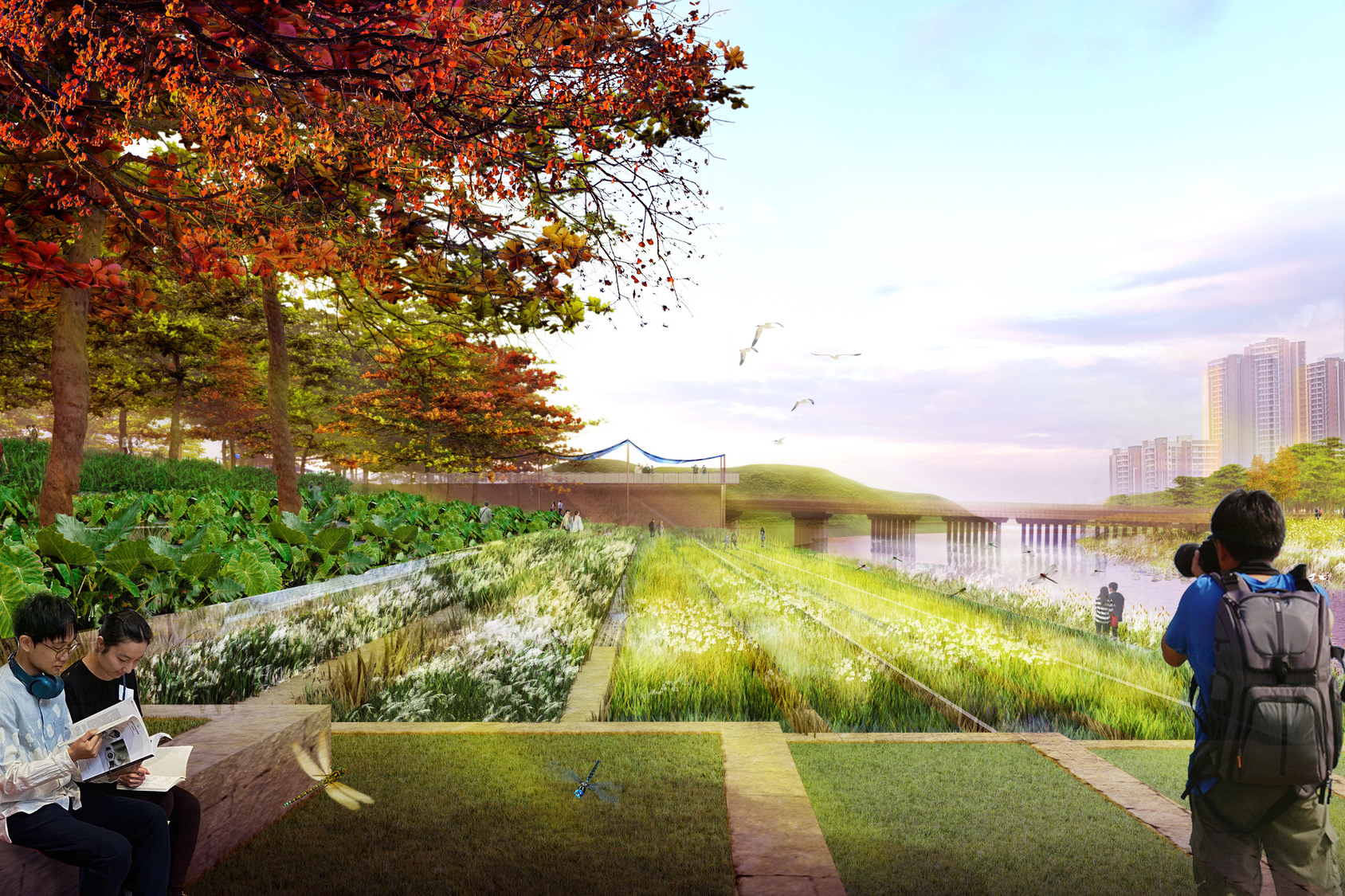
The Joys of Farming and Reading sits in a natural backdrop of mountains and river, facilitating a continuous interface between the city and river
The Gateway to Mountains and River traverses the large Biling Park and the landscape corridor between Maluan Mountain and Qingfeng Hill, building a waterfront lifestyle focused on ecological restoration and Hakka culture
The Journey of Time relies on its central location and adjacent natural and cultural resources to build a riverfront space focused on human experiences and waterfront business
The Convergence of City and Lake, located in the urban development area of Yanzi Lake, creates an urban living room, integrating the Blueway with public recreational uses
The Joys of Farming and Reading sits in a natural backdrop of mountains and river, facilitating a continuous interface between the city and river
The plan will be implemented in phases, coupled with development sequences of the surrounding land, which allows for flexibility, correspondence to local industry iteration sequences, and coordination with changes on the larger master plan of the city.
Currently, the design development of the 1.3-mile-long pilot area has been completed, and project construction will start in October 2023. A beautiful scroll of Pingshan life will soon start to unfold, beginning at Pingshan River.
